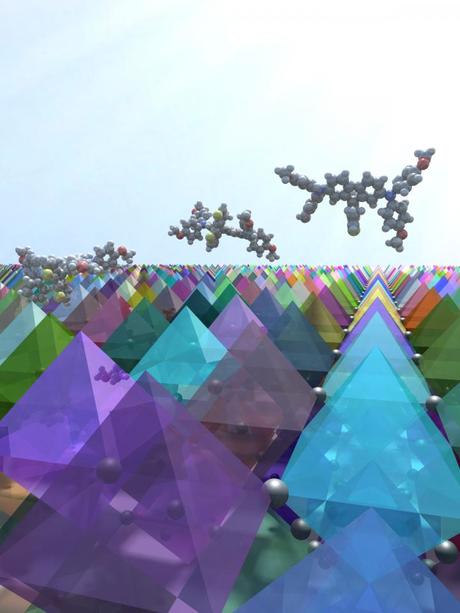Molecular engineering for more efficient solar cells

The goal of creating weather-resistant, highly efficient photovoltaic cells is two steps closer, thanks to research by two independent teams of Australian and Swiss scientists.
The Swiss team have developed a perovskite-based cell that achieves over 20% power-conversion efficiency with a significantly lower manufacturing cost than previous perovskite cells, while the Australian team has found a novel solution to the humidity tolerance problems of these next-generation solar cells. Both studies have been published in the journal Nature Energy.
Among the most promising of new developments in optimising efficiency in solar power generation is photovoltaic cells using light-harvesting films made from perovskites. However, the real-world application of perovskite-based cells has been limited due to their poor performance in humid conditions.
Using the Raijin supercomputer at the NCI National Facility in Canberra, Dr Yun Wang of Griffith University has carried out electronic structure calculations to molecularly design novel materials that address the humidity tolerance issues that have prevented the commercial application of highly efficient perovskite-based solar cells. Dr Wang has been using the Raijin supercomputer to perform ‘virtual’ screening of potential materials to create an efficient water-resistant layer on the perovskite cells and “theoretically forecast their performance through comprehensive understanding of their structural, electronic, magnetic and optical properties”, he said.
Using the supercomputer to perform electronic structure calculations, Dr Wang has molecularly designed a water-resistant layer that will prevent the drop in performance that previously plagued the potential market penetration of perovskite-based photovoltaic cells. He said this work could not have been achieved without access to Raijin and support from the Australian Government. Financial support was also provided by Fundamental Research Funds for the Central Universities and the National Natural Science Foundation of China.
Meanwhile, a Swiss team led by Mohammad Nazeeruddin of the Ecole Polytechnique Federale de Lausanne has developed FDT, a new molecularly engineered hole-transporting material that will significantly reduce manufacturing costs of perovskite cells while maintaining a power-conversion efficiency above 20%. Perovskite solar cells use light-harvesting films that require hole-transporting materials to move the positive charge generated by light hitting the characteristic molecular structure of the perovskite film. Previous hole-transporting materials have been prohibitively expensive, at more than €300 per gram, but FDT will cost about 80% less to manufacture with similar performance.
The development of FDT was led by the Group for Molecular Engineering of Functional Materials at EPFL in collaboration with an international team, including Japan’s Panasonic Corporation and Italy’s Istituto di Scienze e Tecnologie Molecolari del Consiglio Nazionale delle Ricerche.
European Space Agency inaugurates deep space antenna in WA
The ESA has expanded its capability to communicate with scientific, exploration and space safety...
Black hole collision supports Hawking's landmark theory
Astrophysicists have witnessed a collision between two black holes that was so loud, they were...
Uncovering differences in wild and domesticated crops
Researchers have revealed insights into the genetic make-up of wild varieties of common crops...





